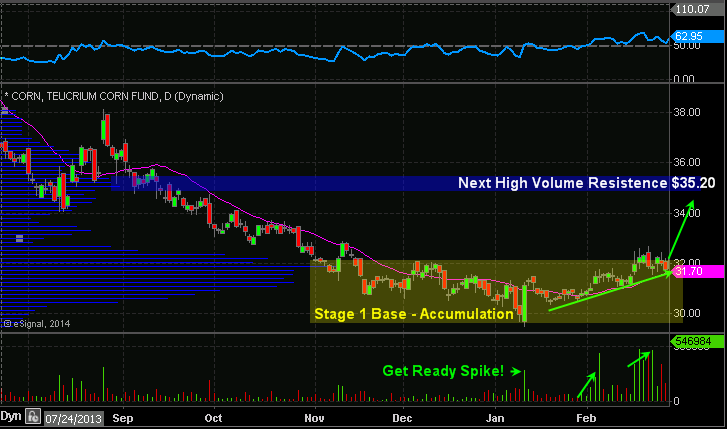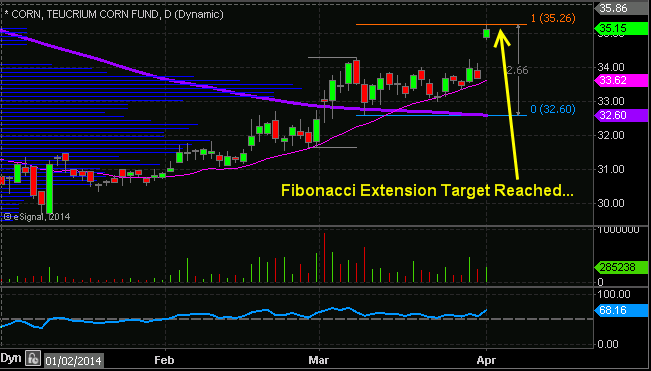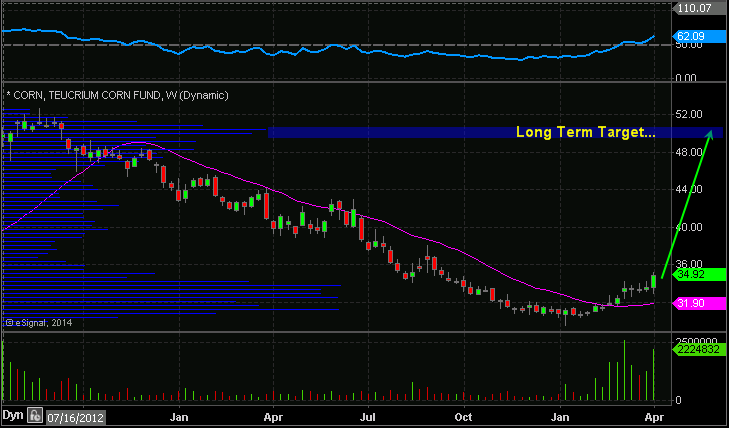Source: Brian Sylvester of The Mining Report (4/8/14)
https://www.theaureport.com/pub/na/zachary-schumachers-state-of-the-rare-earths-address
As China’s rare earth production winds down, other sources worldwide could shape up to reward early investors. But there are different ways to play this (slowly) growing market. Zachary Schumacher, international market analyst with Asian Metals, tells The Mining Report how investors can go medium or long on rare earths, and why joint venture and offtake partnerships are the biggest factors in creating value.
The Mining Report: Zachary, it’s good to have you with us. Many rare earth element (REE) projects are uneconomic at current REE prices. Please give us your “state of the sector” address.
Zachary Schumacher: There are a lot of challenges in the market. There’s a good portion of projects that are uneconomic. Current REE prices make it difficult to justify projects. On top of that, there are some environmental issues with processing. Until we see a real change in the market, very few projects stand out.
TMR: Prices for heavy rare earths (HREEs), at least, have shown some signs of price recovery. What’s most likely to create shareholder value in REE equities: higher REE prices, joint venture(JV) offtake agreements, vertical integration or perhaps other factors that you deem to be relevant?
ZS: That’s a difficult question. There’s a timeframe for a lot of things. Long-term investors would be more interested in higher REE prices. If you’re looking for a project to go into production, JV and offtake agreements are important.
TMR: Interesting. Is that because there’s just not a lot of easy access to capital to develop these projects and JV partners provide that, or is it simply about confidence that a given name is on board?
ZS: JVs give access to more capital, which eliminates a huge barrier. Processing costs are a huge capital expenditure for REEs. It also provides somebody who arguably is going to be consuming or utilizing the material in some other aspect in the production chain. It provides a level of technical expertise that reassures investors.
Take Avalon Minerals Ltd. (AVI:ASX) partnership with Solvay. Solvay offers technical experience with processing. You have an opportunity to be outside of China. This partnership is a good way for Avalon to show that it recognizes the cost of doing it alone may be unfeasible. So you have a political, technical and economic benefits.
TMR: Avalon is hoping that this agreement with Solvay will ultimately result in a JV or offtake agreement with a much larger suitor. Does this deal get Avalon closer to a cash-rich partner?
ZS: It definitely improves its position. It shows that it has an option for processing. It’s got to put it high on the list of potential partners looking at sources outside of China.
TMR: The capex for Nechalacho means that a partner will have to be a big-time player. Avalon likes to tout is that it’s the only REE company that has a bankable feasibility study. Does that increase the chances?
ZS: The feasibility study helps. It shows its willingness and the realism of the project. Yes, the partner would have to be a company with deep pockets. The thing is that a lot of these companies need reliable sources of the material.
TMR: Are there any companies outside of China that you consider vertically integrated?
ZS: Molycorp Inc. (MCP:NYSE) is close, but its processing is in China. Rhodia Inc., which is part of Solvay, would probably be the closest. It does some of its processing out of La Rochelle in France. There is some internal consumption, and some is sold downstream. There are a few projects styled to be vertically integrated that aren’t active right now.
TMR: What about Great Western Minerals Group Ltd. (GWG:TSX.V; GWMGF:OTCQX)?
ZS: Great Western is selling the less-than-common alloys, which is driving its REE project. But it’s not in production for its rare earth oxide yet.
TMR: Which companies have shareholder-friendly offtake or JV partnerships?
ZS: Matamec Explorations Inc. (MAT:TSX.V; MRHEF:OTCQX) and Toyota Motor Group have a good one from Matamec’s point of view. Toyota is not asking that much of Matamec. It provides a good avenue for offloading the material and a background of technical experience similar to Solvay and Avalon.
Frontier Rare Earths Ltd. (FRO:TSX) and Korea Resource Corp., or KORES, have some people questioning what role a government organization like KORES will have. At the moment, it’s a confidence booster that provides a level of structural government political support. The offtake agreement is a 10% stake in the company and KORES is obligated to offtake 10% as well. If there’s an increase in the interest, it would up KORES’s control to about 50% and up the offtake of the material to about 50%. That may worry some investors that a government organization could control about 50% of a company, but it’s an economic deal. KORES wants the company to do well. It recognizes, being right next door to China, the need to have alternative sources outside of China. I’m less worried about political ramifications.
TMR: What should an investor who is looking to gain exposure to this sector look for?
ZS: A lot of projects are suffering from being uneconomic at current prices and demand. There are two big issues: where you do processing and how you do processing. Also, how cost effective is your processing and how much material can you process—what volumes are you looking at?
TMR: What’s a suitable capex range?
ZS: Projects can range from $300–400 million ($300–400M) or higher. Anything below $300M is more plausible.
TMR: Greenland Minerals & Energy Ltd. (GGG:ASX) has an agreement with China Non-Ferrous Metal Industry’s Foreign Engineering and Construction Co. Ltd., or NFC. The deal states that Greenland will use NFC’s separation plant to process its concentrate from Greenland’s Kvanefjeld project in Greenland. As an investor, would you prefer projects that produce oxides or is a simple concentrate the better option because of the lower capex and thus lower risk?
ZS: I’m inclined to say oxides, but producing an REE concentrate is much more feasible. It may be more attractive for investors to say, “Hey, I know this company may not be getting into the downstream industries, but I can rely on the overall market to improve demand for HREEs in the long term.”
TMR: Let’s get into another aspect of this business. Some companies, like Namibia Rare Earths Inc. (NRE:TSX, NMREF:OTCQX) in Namibia, are in jurisdictions where it’s easier to get a REE mine permitted. How much of an advantage is that?
ZS: Namibia as a jurisdiction is desirable, with the environmental regulations, distance to ports and the political support that a company like Namibia Rare Earths can gather for a project. Investors want to look at a place that where they can rely on a readiness, a history and a legal framework.
Namibia Rare Earths has a good project. It’s definitely smart for the company to be where it is. It’s an area where it’ll be easier to get started.
TMR: If you were handicapping this race, what is the next publically traded REEs company to have a JV?
ZS: A few have good projects that could warrant a partnership. Ucore Rare Metals Inc. (UCU:TSX.V; UURAF:OTCQX) is high on my list. It has a good base and understands the market very well. Many had concerns about the area’s infrastructure. Alaska obviously has good reserves of a number of materials, but it can be difficult to get them to port. However, the recent passing of SB 99 by the Alaska State Senate puts an additional $145M toward infrastructure development for this project alone. Investors should be pleased to find local political and economic support for a project, but more importantly, financial assistance at this level can offer real assurance to companies looking to partner, as well.
Texas Rare Earth Resources Corp. (TRER:OTCQX) has an interesting project as well. The company is new to the sphere, so investors may be a little standoffish, but I like the project.
TMR: I don’t think a lot of investors know the story with Texas Rare Earths. Can you tell us?
ZS: Texas Rare Earths has been around for several years. It’s one of the smaller projects. It is based in Texas, which the company likes to highlight as a positive. The regulatory environment for setting up a business can be friendlier there.
One of the things that may be holding it back is that it doesn’t really have a lot of its documentation up yet. It doesn’t have a feasibility study, and it’s going to update its existing preliminary economic assessment. It’s looking at a long-term mine that will be able to produce small volumes of 5,000 and 8,000 tons per year (5–8 ktpa) for 20 years.
TMR: Does management have experience?
ZS: I’ve talked to some of the management. They have a technical background. CEO Daniel Gorski has been in the mining industry a lot of years. I think he understands it. He doesn’t come from a background of REEs, but he worked with a uranium explorer previously. It goes a long way in REEs if you understand the difficulty of dealing with radioactive material or even have close ties with people who might offtake some of that material or store it.
TMR: What public company could be the next to bag an offtake agreement?
ZS: I like Quest Rare Minerals Ltd. (QRM:TSX; QRM:NYSE.MKT). Strange Lake is an interesting middle-sized project. Extraction is an issue. Companies are going to look at that and know it. Its location in Québec, an area of Canada that has history with mining, goes a long way.
TMR: Even with the poor performance of the REE sector during the past few years, new players, like Texas Rare Earth Resources, continue to enter the space. Does that mean there’s still money to be made?
ZS: Maybe it’s the other way around. It may be that mining companies recognize that there is still interest in the market from investors. Is there still money to be made on the investors’ behalf? Yes. There’s definitely a level of opportunity out there, should a company get far enough to get into production.
But is there still room? The market is flushed with JV companies that are not quite in production, and even new ones. The difficulty of getting one of these companies into production may be insurmountable even for great projects with good management, good background and low capex. There may be a bit of overconfidence among some people going into new projects.
It’s a two-sided coin. The REEs market is still suffering from the doldrums of the bubble popping. If prices were high, any of these projects would be plausible to come on-line. For the short term, it looks like a number of these projects have no chance.
There’s a timeframe where you can see that there’s growing demand for these products. Look at neo magnets: There’s very few ways to avoid using them. That market’s big in the U.S. The magnet market hasn’t shrunk. They haven’t had any incentive to leave now that prices are falling. It just makes their production cheaper. At a certain point you’re going to see a flattening out of price. Long-term demand for magnets in a hundred industries will likely continue to grow. There’s space for a company or two outside of China to produce, to do processing and to be a very promising investment opportunity for plenty of investors. It’s finding the right one. That’s been the game for the past two years.
TMR: If getting a mine into production was the only way to make money as a mining investor, there wouldn’t be a mining sector. There’s such a small percentage of any mined commodity that actually reaches production. If there was a sudden, dramatic swing again in REE prices, investors could make money on some of these names even if their chances of getting into production didn’t increase at all.
ZS: That’s definitely true. The perception that the market is not doing very well is driven by REE pricing. Consumption is still there. People who consume the material, they recognize that they need to use it. It’s in their cost analysis. They anticipate long-term projections for these materials. Not because the market’s going to flatten out and disappear, but because they need to use it and everybody else needs to use it. If you do see a turnaround in REE prices, there are a number of companies that could benefit investors—even without the project going into production. Investors can still tap into the growing market.
TMR: The message then to an investor is to be long REEs.
ZS: Yeah. Be long or find your moment. Wait for the moment when you see REE prices bottoming out. And we may be fast approaching that level. The future of REEs isn’t bad.
TMR: Thanks, Zachary.
Zack Schumacher joined AsianMetal Inc. as a rare earths and tech metals analyst in 2013. He covers fluctuations in the prices and consumption of these materials and manages several indices that list current market prices. Schumacher received his Bachelor’s degree from the University of Pittsburgh in international relations and Chinese and completed his Master’s of International Business from New York University.
Want to read more Mining Report interviews like this? Sign up for our free e-newsletter, and you’ll learn when new articles have been published. To see recent interviews with industry analysts and commentators, visit The Mining Report homepage.
DISCLOSURE:
1) Brian Sylvester conducted this interview for Streetwise Reports LLC, publisher of The Gold Report, The Energy Report, The Life Sciences Report and The Mining Report, and provides services to Streetwise Reports as an independent contractor. He owns, or his family owns, shares of the following companies mentioned in this interview: None.
2) The following companies mentioned in the interview are sponsors of Streetwise Reports: Namibia Rare Earths Ltd. Streetwise Reports does not accept stock in exchange for its services.
3) Zach Schumacher: I own, or my family owns, shares of the following companies mentioned in this interview: None. I personally am, or my family is, paid by the following companies mentioned in this interview: None. My company has a financial relationship with the following companies mentioned in this interview: None. I was not paid by Streetwise Reports for participating in this interview. Comments and opinions expressed are my own comments and opinions. I had the opportunity to review the interview for accuracy as of the date of the interview and am responsible for the content of the interview.
4) Interviews are edited for clarity. Streetwise Reports does not make editorial comments or change experts’ statements without their consent.
5) The interview does not constitute investment advice. Each reader is encouraged to consult with his or her individual financial professional and any action a reader takes as a result of information presented here is his or her own responsibility. By opening this page, each reader accepts and agrees to Streetwise Reports’ terms of use and full legal disclaimer.
6) From time to time, Streetwise Reports LLC and its directors, officers, employees or members of their families, as well as persons interviewed for articles and interviews on the site, may have a long or short position in securities mentioned. Directors, officers, employees or members of their families are prohibited from making purchases and/or sales of those securities in the open market or otherwise during the up-to-four-week interval from the time of the interview until after it publishes.
Streetwise – The Gold Report is Copyright © 2014 by Streetwise Reports LLC. All rights are reserved. Streetwise Reports LLC hereby grants an unrestricted license to use or disseminate this copyrighted material (i) only in whole (and always including this disclaimer), but (ii) never in part.
Streetwise Reports LLC does not guarantee the accuracy or thoroughness of the information reported.
Streetwise Reports LLC receives a fee from companies that are listed on the home page in the In This Issue section. Their sponsor pages may be considered advertising for the purposes of 18 U.S.C. 1734.
Participating companies provide the logos used in The Gold Report. These logos are trademarks and are the property of the individual companies.
101 Second St., Suite 110
Petaluma, CA 94952
Tel.: (707) 981-8999
Fax: (707) 981-8998
Email: [email protected]



















